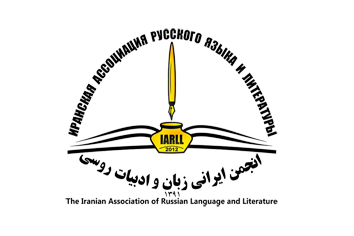CALENDAR SYSTEMS ON “VOYAGE BEYOND THREE SEAS”
DOI:
https://doi.org/10.61186/IARLL.26.8Keywords:
Afanasy Nikitin, Eid al-Adha, Eid al-Fitr, Easter, 1467 - 1472Abstract
The article discusses the calendar systems used by Afanasy Nikitin in his work “Voyage beyond Three Seas”. At the beginning of his journey, Afanasy rarely resorts to calendar dates, but as he moves away from the Russian land, he begins to report on Christian holidays, linking them with the events of his journey. In the fourth year of his journey, Athanasy loses his calendar entries and cannot determine the month and even the day of the week according to the Christian calendar. He begins to recall the correspondence of Christian and Muslim holidays, which is reflected in his narrative. Memories of the proximity of Easter to Eid al-Fitr and St. Peter's Day to Eid al-Adha allow him to determine the time of the Christian Easter rather approximately. This information from Athanasy allowed us to accurately calculate the year when he began his journey (1467), and when he completed it (the end of 1472), and it was not considered earlier than 1468-1474. Athanasy, as can be seen from his notes, clearly feels a certain uncertainty in his calculations, which leads him to celebrate Easter together with Muslims, who celebrate Eid al-Adha at this point of the year. Until Trebizond, which he entered on October 1, 1472, Afanasy Nikitin could not accurately determine the time of Christian holidays. Despite this, he continues to correlate certain Christian and Muslim holidays. Athanasy Nikitin's use of two calendar systems is, of course, due to the loss of his records, which forced him to switch to a relative chronology of his journey, based on the possibilities available to him. Good memory and observation allowed Afanasy Nikitin to get out of a difficult situation and continue celebrating Easter in a situation where its exact date could not be calculated. As a result, for three years (from the beginning of 1470 to the end of 1472), Afanasy Nikitin could not accurately find out the exact dates of Christian holidays.
Extended Abstract:
This article examines the calendar systems used by Afanasy Nikitin in his work "Voyage Across Three Seas" (Khozheniye za tri morya). At the beginning of his journey, Afanasy rarely resorts to calendar dates. However, as he moves farther from Russian lands, he begins to report on Christian holidays, linking them to events of his travels. In the fourth year of his journey, Afanasy loses his calendar notes and can no longer determine the month or even the day of the week according to the Christian calendar. He begins to recall the correspondence between Christian and Muslim holidays, which is reflected in his narrative. Memories of Easter's proximity to Eid al-Fitr (Uraza-Bayram) and St. Peter's Day's proximity to Eid al-Adha (Kurban-Bayram) allow him to approximate the timing of Christian Easter quite roughly.
This information from Afanasy has allowed the authors to precisely calculate the year he began his journey (1467) and concluded it (late 1472), contrary to the previously accepted dates of 1468–1474. As is evident from his records, Afanasy clearly feels a certain uncertainty in his calculations, which leads him to celebrate Easter alongside Muslims, who are observing Eid al-Fitr at that time of year. Until his arrival in Trebizond on October 1, 1472, Afanasy Nikitin cannot accurately determine the timing of Christian holidays. Despite this, he continues to correlate various Christian and Muslim holidays.
Afanasy Nikitin's use of two calendar systems is undoubtedly linked to the loss of his notes, which forced him to switch to a relative chronology of his journey based on the resources available to him. A good memory and powers of observation allowed Afanasy Nikitin to extricate himself from a difficult situation and continue to observe Easter when its exact date could not be calculated. Ultimately, for three years (from early 1470 to late 1472), Afanasy Nikitin could not accurately ascertain the exact dates of Christian holidays.
A meticulous analysis of the text reveals that the terms "ulu bagryam" and "besermensky" refer to the Muslim holiday of Eid al-Fitr (Uraza-Bayram), which occurs approximately 70 days before Eid al-Adha (Kurban-Bayram), and not solely to the latter as previously thought. This clarification is crucial for understanding his chronological references.
The information provided by Afanasy Nikitin regarding the correspondence of Eid al-Fitr with Easter and Eid al-Adha with St. Peter's Day allows for the precise determination of the years of the merchant's travels. The pairwise proximity of these Christian and Muslim holidays in 1468 and 1469, despite minor inaccuracies in Afanasy's memory, indicates he began his journey in 1467.
Only upon reaching Trebizond was he able to return to using the Christian calendar, shortly before his records end, with his arrival in Caffa noted precisely for November 6, 1472.
References
1- Введенский А. М. (2024). Датировка путешествия Афанасия Никитина за три моря: новый взгляд, Slovene. International Journal of Slavic Studies. Том 11, №2. С. 72 – 82.
2- Бобров А. Г. (2023). Ефросин Белозерский в поисках рая, Москва, Изд-во «Алетейя».
3- Лурье Я. С., Семенов Л. С. (1999). Комментарии к «Хождению за три моря» Афанасия Никитина, Библиотека литературы Древней Руси, Т. 7. Санкт-Петербург, Изд-во «Наука», С. 544 – 548.
4- Петрушевский И. П. (1958). Комментарий географический и исторический, Хожение за три моря Афанасия Никитина, 1466 – 1472. Москва, Ленинград, Изд-во Академии наук СССР, С. 187 – 251.
5- Семенов Л. С. (1978). К датировке путешествия Афанасия Никитина, Вспомогательные исторические дисциплины Т. 9, Москва, Изд-во «Наука», С. 134 – 148.
6- Срезневский 1857 Срезневский И. И. (1857). Хожение за три моря Афанасия Никитина в 1466 – 1472 гг., Москва, Типография императорской Академии наук.
7- Хожение за три моря Афанасия Никитина, 1466 – 1472 (1958). Москва, Ленинград: Изд-во Академии наук СССР.
Downloads
Published
How to Cite
Issue
Section
License
Copyright (c) 2025 Issledovatel'skiy Zhurnal Russkogo Yazyka I Literatury

This work is licensed under a Creative Commons Attribution 4.0 International License.
![]()
"Creative Commons Attribution 4.0 International (CC-BY 4.0)"


